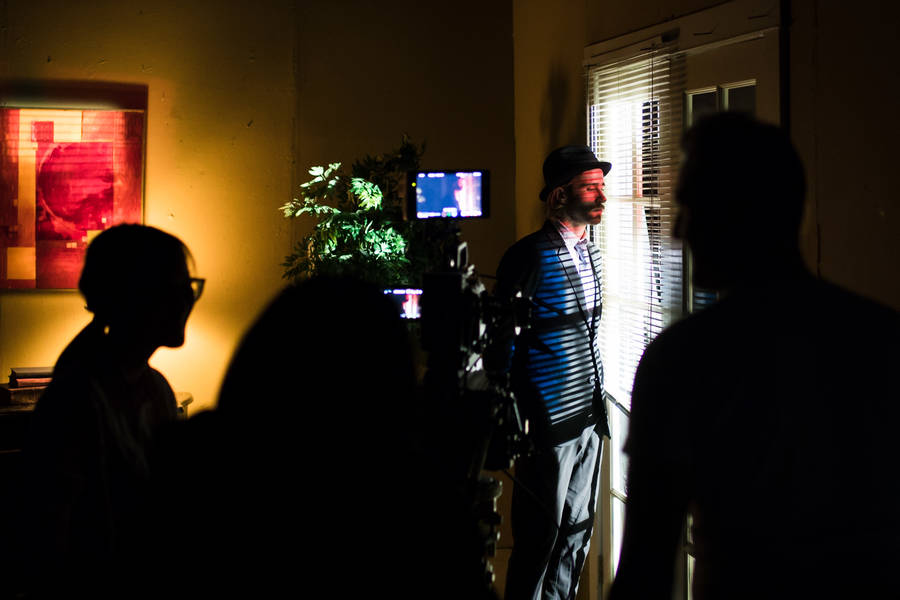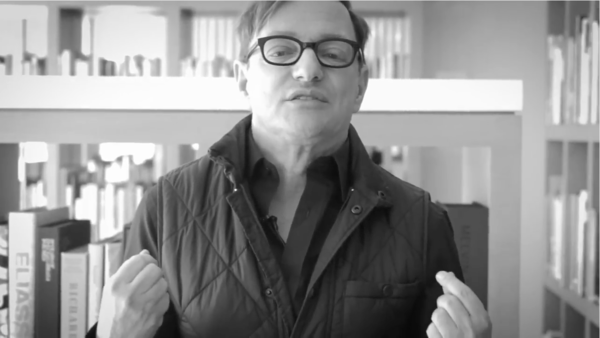photo-essay / faculty / film
May 25, 2017
Interview and photography by Juan Posada
Cinema Paradiso: Cinematographer and Film Faculty Affonso Beato Brings his Commitment to Collaboration into the Classroom
Renowned director of photography Affonso Beato has forged a career that's distinguished and defined by his long-term collaborations with acclaimed filmmakers, including Pedro Almódovar (All About My Mother) and Stephen Frears (The Queen). While all his films are gorgeously shot, don’t expect his filmography to be filled with eye-popping visuals. Instead, Beato embraces the collaborative nature of filmmaking, prioritizing the filmmaker’s vision for the storytelling above all else, including the natural temptation to draw attention to his camerawork.
Beato draws from nearly half a century's worth of filmmaking experience in his many popular ArtCenter courses, including Cine Workshop and Cinematography for Directors (featured in the images below), where he consistently advises students to take a similarly egoless path to establishing a career behind the camera. In the following Q&A Beato retraces his own steps from his roots in Brazil as a budding cineaste through his thriving career as burgeoning cinematographer.
We call ourselves artists and we are, no doubt. But which kind of artist are we?
Affonso Beato
What was your relationship with movies growing up?
My father would take me to mass and then to a movie house every Sunday morning. This was in 1944. I saw the original versions of Superman, Flash Gordon, Rocket Man. These movies blew my mind so much that I wanted to make my own. So I hid candles behind shoeboxes and made little strips of film and had the drawings lit from behind. Then I studied fine art, where I discovered my main interest was really photography. I started shooting jazz sessions and architecture. For my first professional job, I shot for the Brazilian Architecture Institute.
How did you begin collaborating with filmmakers?
I was one of the most privileged cinematographers of my generation because this movie that I shot, Antonio das Mortes, became an international reference for myself and for filmmaking. I then had the privilege of working with very important directors. I am the only cameraman who has done three films in a row with Pedro Almodóvar. I’ve worked with Stephen Frears on The Queen, Mike Newell on Love in the Time of Cholera, Walter Salles on Dark Water. With Jim McBride, who is also an instructor here at ArtCenter, I did ten feature films, including The Big Easy, Great Balls of Fire!.
Now I am dedicating my time more to teaching. This has been very important to me because as a cinematographer-artist you work intuitively. You don’t formulate intellectually sometimes. When I started teaching this became a necessity, to organize my knowledge and really find a way, in relation to the students, to communicate what they needed to know. The students are really the True North of my career as a teacher. The most important thing that I want the students to learn is about the specifics of filmmaking in cinematography by itself. We call ourselves artists and we are, no doubt. But which kind of artist are we? That’s very important to understand. Filmmaking is a collective art.
How do you answer the question of why you do this work?
I see cinematography as design. What is design? For me it is form with a function. The function being the script or the vision of the director. You serve the project. You know, it’s not a matter of bringing your own style and your tastes, but to adapt yourself to the proposition of the script and the director. This vision is very important because there is a tendency in students and artists to sometimes impose themselves individually, when this cannot be the case in filmmaking or cinematography. I think this is important because students come with individual dreams and we need to respect them.


















